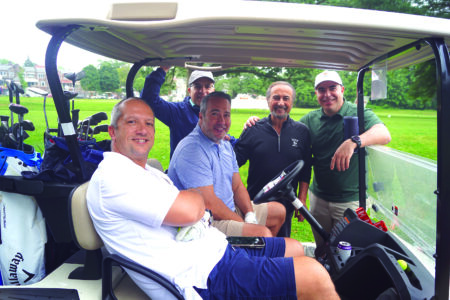A robotic-assisted rehabilitation system, known as the Lokomat,is already helping many patients at New York Methodist Hospitalrecover from diseases and disorders like spinal cord injury,stroke, traumatic brain injury, multiple sclerosis, cerebral palsyand Parkinson’s disease which often leave patients with a decreasedrange of motion due to injury or abnormality of the brain. Whilethere is currently no cure, certain treatments have been shown togreatly improve quality of life.
One of these treatments places the patient in a harnesssuspended slightly above a moving platform while a therapistphysically moves the patient’s legs. In advanced versions oftreadmill training, the orthosis mechanically moves the patient’slegs, training the gait more naturally and accurately. Thisadvanced robotic-assisted machine is called the Lokomat, which, inconjunction with other kinds of physical therapy, helps patientsregain mobility. NYM is the first hospital in Brooklyn and one ofthe first in the country to acquire the Lokomat.
The premise of this robotic-assisted rehabilitation is that newmovement or an improvement to an existing movement in a patientwith a neurological disorder can be achieved only through a veryhigh number of repetitions of that movement. These movements mustrepresent the actual movement-whether walking correctly or puttingon an earring-to be learned as accurately as possible.
The new technology allows patients to repeat these movements atthis level of accuracy. It can also focus in on specific joints andmuscles, for instance, the knee or the hip, and target especiallyweak areas, creating an individualized therapy experience.
The introduction of the Lokomat has proved to be a greatadjunct to the therapy that NYM offers to patients, said ManuelWilfred, P.T., chief of physical therapy. The therapy is veryindividualized, based on the type of neurological disorder andphase within the disorder. I have witnessed notable improvementswith patients who have been rehabilitated on our machine, in lessthan three weeks, said Wilfred.
In addition to the Lokomat, used for rehabilitation involvingwalking and gait, NYM has also acquired the Armeo, a machine forthe upper body, which aims to increase mobility in the arms andfingers for patients who have experienced neurological illness. Theoccupational therapy exercises made possible by this machine aredesigned to provide patients with the specific skills needed toreach the highest level of independence in daily activities.
Patients enjoy the feeling of success in their therapy, saidNorma Rossi, O.T.R., chief of occupational therapy. They getimmediate and constant feedback from the machine and from thetherapists at NYM.
For more information, call the Department of Neurosciences’Rehabilitation Division at 718-780-3248.

 On the Avenue: ‘Gin Merchant’ drink coming to a bar near you!
On the Avenue: ‘Gin Merchant’ drink coming to a bar near you!  On the Avenue: Community golfs ‘fore’ good cause
On the Avenue: Community golfs ‘fore’ good cause